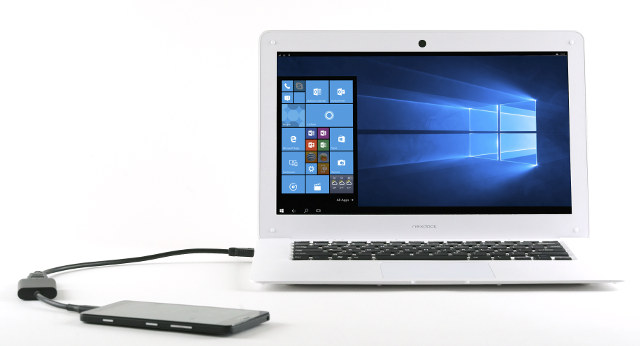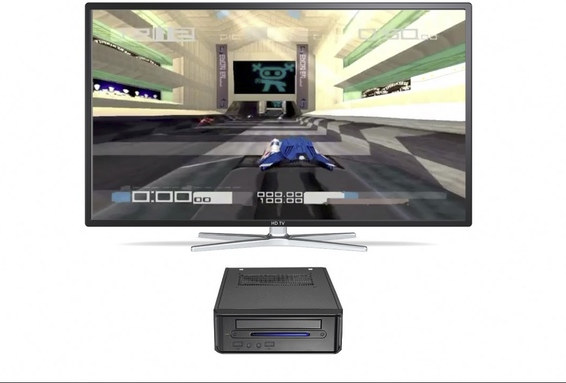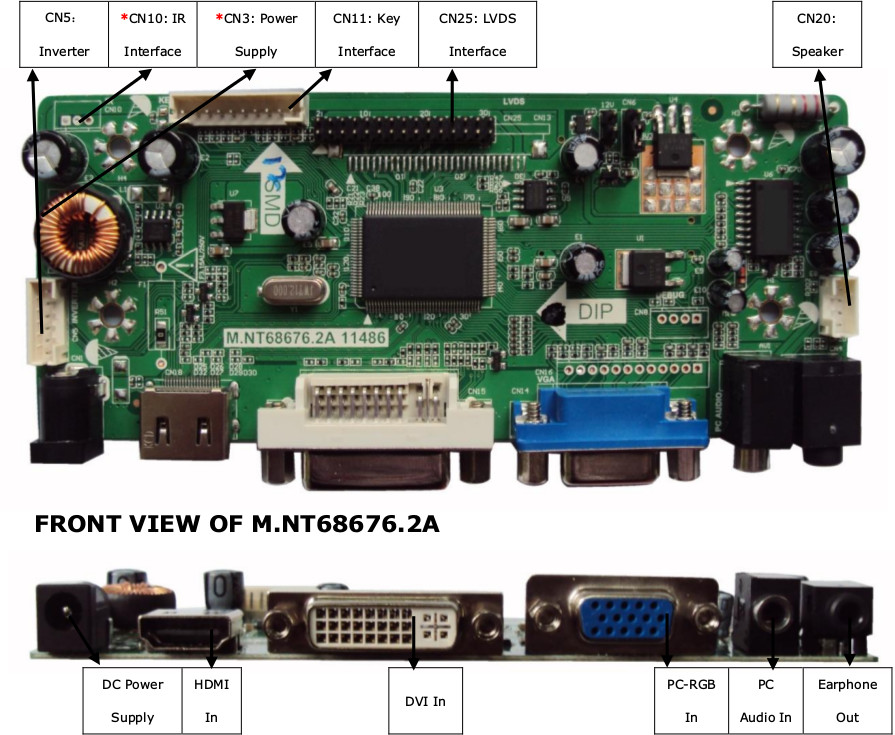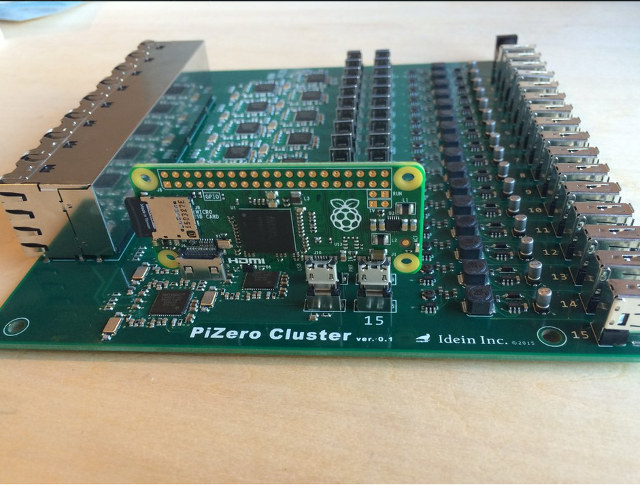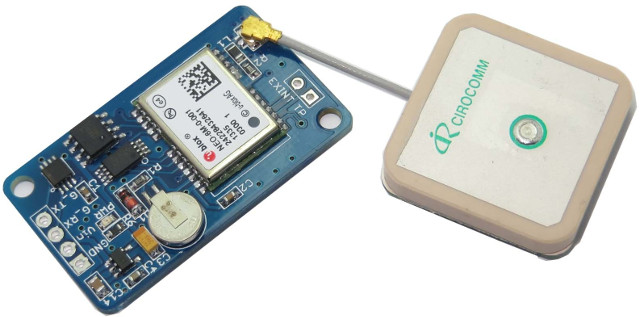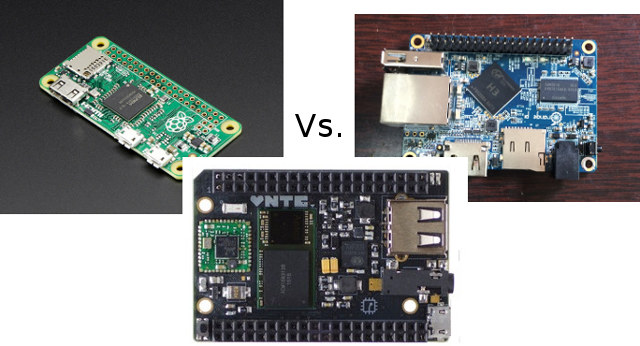Motorola once launched the Lapdock, a device that looks like a laptop with a 11.6″ screen and a keyboard, but without processor or memory since it was instead designed to connect to the company’s Atrix 4G smartphone. Motorola eventually pulled the plug on this concept, and maybe it was just ahead of its time, as a startup has now developed NexDock, a device similar to Lapdock with a 14″ display, built-in battery and Bluetooth keyboard. NexDock technical specifications: Display – 14.1″ TN screen; 1366×768 resolution; 16:9 display ratio Bluetooth 4.0 keyboard and touchpad Video input – mini HDMI port Audio Output – 3.5mm headphone port Storage – micro SD card slot USB – 2x USB ports Battery – 3.8V / 10000mAh Li-ion battery Power – 5V/2.5A via 3.5mm power barrel Dimensions – 351 mm x 233 mm x 20 mm Weight – 1490 grams NexDock is operating system agnostic and would […]
Crowdfunded Projects Use Raspberry Pi and ODROID Boards into Home Theater PCs and Retro Game Consoles
I’ve been tipped about two separate projects launched on Indiegogo and Kickstarter that integrate Raspberry Pi or ODROID boards into their products. indieGO! retro gaming console and distribution leverages Raspberry Pi 2, ODROID-C1+, or ODROID-XU4 to play older games, while Pi2Media HT1 relies on either Raspberry Pi2, and later the upcoming UP Board or ODROID-C2 boards in order to offer a Surround 7.1 Home Theater PC. indieGO! Retro Game Console Beside the development board, indieGo! also includes a DVD-RW drive, an SD card reader, a mini-ITX case, a 3D-Printed I/O-shield and ARM board holder, a USB joypad, and two USB ports. indieGO!-OS is also a Linux distribution based on AEROS running Exagear which means both ARM (native) and x86 (emulation) executables will run on the device. Pre-isntalled programs include Wine, Kodi, Moonlight, AmiCloud, and EmuLA. The many emulators installed allow support for games running Playstation, C64, Dreamcast, Game Boy, Atari, Sega, PC, […]
How to Use Your Old Laptop Screen with Raspberry Pi or Your Computer
After reading an article on Liliputing about using Raspberry Pi Zero with Motorola Lapdock, I decided to look for clones for the device since Motorola Lapdock is now hard to buy at a decent price, if at all, since the product has been discontinued for a while. I did not find anything similar, but instead I came across M.NT68676.2A LCD driver HDMI kit selling for $37.99 on eBay that allows you to re-use your old laptop screen with any development board or computer that comes with HDMI, DVI, or VGA output. The kit is comprised of a monitor control board (M.NT68676.2A), an “inverter” board which depends on your LCD panel model number, a keypad board, an LVDS cable, and a cable to connect all three boards together. M.NT68676.2A monitor control board specifications: Chipset – NT68676 (UFG) Supported Panel – LED/LCD, Single/Dual LVDS (8bit) up to 2048×1152 resolution Video Input “PC-RGB […]
This is What a 16 Raspberry Pi Zero Cluster Board Looks Like
Idein, a Japanese startup, has been working with a Raspberry Pi compute module to create Actbulb, a multi-functional device for applications using computational sensing and data analysis, and that fits in a regular light bulb socket. But for their internal testing, they’ve decided to create a cluster for 16 Raspberry Pi Zero boards. PiZero Cluster board has 32 micro USB ports for power and data, two for each Raspberry Pi Zero board, 16 USB type A ports, and 16 Ethernet interfaces. They’ve likely done this board for testing their ActBulb, as Koichi Nakamura, Idein CEO & founder mentioned that: We are making a sensing device that uses Raspberry Pi compute module. So we need many Pi’s for the development and tests. Since we will use Pi’s GPU for image processing, deep learning, etc. We need real Pis but not just Linux machines. Another reason. It can be used for flashing […]
FOSDEM 2016 Schedule – Open Source Hardware and Software Event in Europe
FOSDEM (Free and Open Source Software Developers’ European Meeting) is a 2-day event that usually takes place on the first week-end of February in Brussels, but this year it will be on January 30-31. The event brings thousands of developers, hackers, and other person interested in open source technology who present their projects and share ideas. FOSDEM 2016 schedule is now available, and There will be 557 speakers, 612 events, and 50 tracks this year including 7 main tracks: Distros, Enterprise, Hardware, Communications, Miscellaneous, Office, Systems Administration, and Virtualization. So I’ve had a look at some of the talks, especially out of “Embedded, Mobile and Automotive” and “IoT” devrooms, and prepared my own virtual schedule although I won’t be able to attend. Saturday 10:30 – 10:55 – MIPS, the other side of the embedded by Alexjan Carraturo For many years MIPS processors have been involved in the embedded market, particularly […]
Ublox NEO-6M $10 GPS Module with Antenna Works with Arduino, Raspberry Pi, etc..
Last week, I wrote about NavSpark Mini a $6 GPS + Beidou module, that’s also available for “free” plus $10 shipping. However, if you don’t have an antenna, you’d also need to add a $9 antenna, bringing the total price to $19 for this low cost GPS solution. But there’s actually a cheaper alternative with Ublox NEO-6M GPS module, as it sells for $10 with a GPS antenna including shipping on either Aliexpress or eBay. Ublox NEO-6M based GPS module specifications: NEO-6M-0-001 module Storage – EEPROM for configuration data External interfaces – UART; default baudrate: 9600 bps Misc – RTC battery (MS621FE) Power Supply – 3 to 5V The battery may not always be included due to transport regulations, so you may have to purchase it separately and solder it yourself. The module is not exactly new, and has been around at least since 2013, so there’s also some documentation, […]
Raspberry Pi Zero, C.H.I.P, and Orange Pi One Boards’ Features and Price Comparisons
With Raspberry Pi Zero, Next Thing C.H.I.P, and Orange Pi One, we now have have three ARM Linux development boards selling (now or soon) for less than $10 excluding shipping and taxes. So I’d think it would be interesting to compare the features of the boards, and prices for different use cases. The comparison table below shows the three boards features side-by-side with items highlighted in green for the best or extra features, and in red for the weakest. Some cells will have to be filled later as data is currently not available (marked TBD). Raspberry Pi Zero C.H.I.P Orange Pi One Processor Broadcom BCM2835 single core ARM11 processor @ 1GHz (~1250 DMIPS) Allwinner R8 Cortex A8 processor @ 1 GHz (2000 DMIPS) Allwinner H3 quad core Cortex A7 processor @ 1.2 GHz (4x 2280 DMIPS) GPU VideoCore IV ARM Mali-400 ARM Mali-400MP2 Video Decoding 1080p30 for H.264, MPEG2* and […]
Ten Most Popular Posts of 2015 and Statistics on CNX Software
In the second part of 2014, we saw a big jump in performance thanks to Cortex A15 and A17 based SoCs, and higher clocked Cortex A9 processors such as Rockchip RK3288 and Amlogic S812, but in 2015, TV box companies have focused on lowering the price and adding features such as HDMI 2.0, instead of looking for higher and higher CPU and GPU performance, and they’ve also moved to 64-bit ARM platform. Intel also continued its foray into low cost HDMI sticks and mini PCbased on Bay Trail, and later on Cherry Trail based devices. The development boards story was also very much about lower cosst with the $15 Orange Pi PC, follow a few months later by the $5 Raspberry Pi Zero, although people looking for performance at any price still saw the release of Nvidia Jetson TX1 board. It’s was also a big year for IoT with the […]


